Used to be that when I thought about hair extensions, my mind went straight to images of Britney Spears’s oft-maligned visible wefts. Not kidding: Google the words “Britney Spears weft” and you’ll be horrified. Google will also treat you to images of telltale hair-extensions poking out of the scalps of other glam celebs, from Beyoncé to Victoria Beckham.
I didn’t consider hair extensions for myself, even though I’ve always had baby-fine hair. Various words have been used to describe it: Wispy… Fairy dust…Temperamental…Lousy.
Then came perimenopause, and things went from bad to worse. (Not that I thought such a thing was possible.) Instead of thinning at the roots, as is typical of some follically-challenged middle-aged women, I began thinning at the chin. Which is to say, while the hair at the crown of my head had plenty of heft, by the time it grew long enough to graze my shoulders, poof—it began to disappear. I’m talking literally see-through strands.

Our gal Hillary, above, before hair extensions.
Many a hairdresser told me that if we simply took off those flimsy ends, my hair would look neat and full. Which is basically code for, “Let me give you a mom bob over and over again.” It took me a while to realize this; so for quite a few years, I would go through the cycle of cut/grow/still thin/cut/grow/still thin. Out of desperation, I’d put it up in a pony, but what I had back there could make a rodent tail look positively bodacious.
Read More: Menopause and Beauty: The Dry, The Gray (and Thin), and the Gorgeous
Hair Extensions: The Coco Chanel Solution

And Hillary with her extensions.
Coco Chanel had what I thought would be the perfect solution to my problem: She designed bouclé cardigan jackets with a weighted hem, which caused the jacket to hang perfectly and move with you when you walk. I mentioned this to a few hairdressers, who assured me that the only thing worth sewing into my hair were extensions.
I started clipping in a small hairpiece I found on QVC, which I would gather up along with my three other strands to make a more substantial ponytail. From there, I graduated to the Halo Couture, a nifty $200 gizmo that’s basically hair attached to an invisible headband (more on this, below); it became my savior for special events, but I also lived in fear of the invisible band making a not-so-invisible appearance in public.
I lived in fear of the invisible band making a not-so-invisible appearance in public.
As the strands continued to diminish, I found myself thinking more and more about hair extensions. I researched the hell out of them, chose a local salon that specializes in the service, plunked down $500 for the tape-in variety, and have never looked back. They are, without a doubt, the single best thing I have ever done for my appearance, save for a brief dalliance with Weight Watchers a few decades ago.
Like a Chanel jacket, my hair swings. It moves when I walk. It hangs decadently over my shoulders. And it gives me more confidence than I ever imagined possible. Do I wish I didn’t have to max out my credit card every eight weeks to maintain this swagger? Absolutely. But I make up for the deficit with the richest self-esteem boost ever.
Read More: The Bald Truth: What I’ve Gained From Hair Loss
Hair Extensions for Women Over 50: Our Complete Guide
One of the reasons I initially shunned extensions was that I assumed getting them would mean looking as though I had suddenly grown Angelina Jolie-length hair overnight. And if you think going from brunette to blonde is a magnet for comments, try going from a bob to a mane in 24 hours.
I always get real hair, mainly because of color choice
But the truth is, many women take the plunge in order to simply amp up their locks with a little extra volume; yes, the extensions are anywhere from 12 to 20 inches when first “installed,” but your stylist can cut them to whatever length and shape you desire. Fortunately, all extensions can be shampooed as you would your virgin hair; though some require avoiding oil-based conditioners, which can loosen the tapes or bonds. Blow-drying, curling, or flat ironing are A-OK as well.
Before you dive in, you have to decide whether to go with real or synthetic hair. Sometimes real hair is pricier; sometimes it’s not. But typically, synthetic hair has a slightly artificial sheen to it, is coarser in feel, and tends to hang poker straight,—which can be a bit obvious when blended with your own ‘do.
I always get real hair, mainly because of color choice. Each brand has slightly different shades and they have to match my hair color (even though we tinker with my actual hair color). But some lines are better matches for me than others. So color trumps hair type usually.
Next, it’s on to extension type, which can confuse even the savviest beauty editor. Suffice it to say, there are pros and cons to all of them, and prices are all over the map depending on where you live, how swanky the salon, and how expensive the product you choose.
Hidden Wire Hair Extensions (about $200)

Sold under a variety of names (Halo, Solo, Hidden Crown, and Secret Extensions to name a few), this bit of genius is essentially a circular fishing wire or nylon thread with hair attached to one side of it. You place it over your head like a tiara (hair in back), then pull your own strands out and over the sides of the band, obscuring the already invisible wire. Put it on, take it off…this is a commitment-free deal.
Clip-In/Weft Extensions (up to $200)
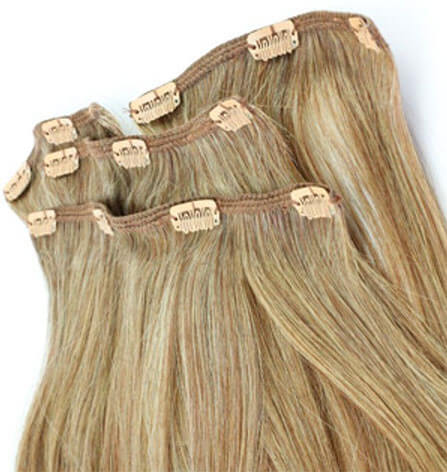
Like the Halo, these snap-open/snap-shut pieces allow you to bump up the volume and length of your hair whenever you fancy a mightier mane; just clip them onto the hidden layers near your scalp and go. Sold everywhere from beauty-supply stores (like Ulta Beauty) to online retailers, clips-ins come in a wide variety of lengths, widths, and colors.
Tape-In Extensions (about $400 to $800)
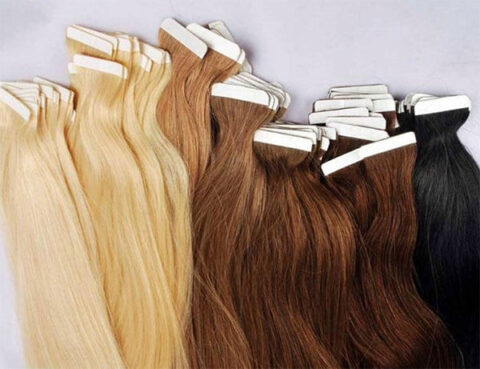
One of the fastest methods (less than an hour to do a whole head), tape-ins involve simply sandwiching one-inch sections of your own hair between two sections of extensions, and sealing them together with nearly invisible, medical-grade tape. These sections lie flat and are beautifully inconspicuous, require removal and reapplication every eight weeks or so, and can be used approximately four times before you have to invest in a new set. They are especially good for thin/fine hair, as they typically do less damage than the more invasive bonded types.
Fusion/Bonded Extensions ($800 to $2,000)
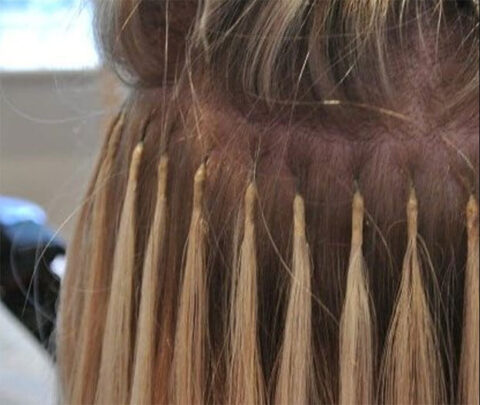
These babies are bonded to strands of your natural hair using special adhesives and involve crimping or fusing them with something that looks suspiciously like a hot-glue gun. The process takes three to four hours for a whole head of hair, and it can be quite damaging to strands, as repositioning (every two-to-three months), requires strong solvents and some tugging. On the upside, they are far more durable than tape-ins, and because the fusion starts high on the head, you can pull your hair up into a high bun without revealing telltale hardware.
Sewn-In/Braided-In/Weave Extensions ($600-$1,500)
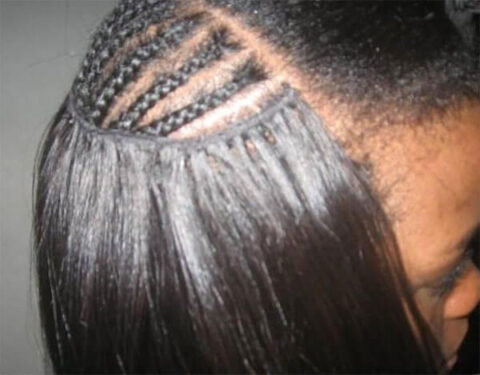
This method is used predominantly for women with thicker or coarser hair because your natural hair is braided into a cornrow first, and the extensions are sewn onto that braid. The process takes hours, and the tight weave can be rather painful, putting a strain on your scalp (not unlike waking up the morning after getting your braces tightened). They last six to eight weeks and, of all the extensions, are possibly the most sturdy and seamless looking.
Micro-Link Extensions ($500 to $800)
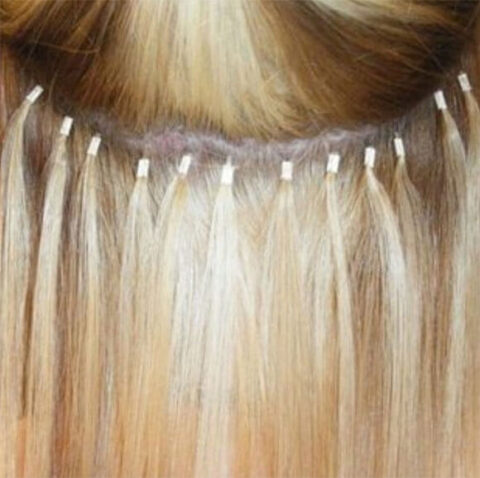
Also known as MicroBead or MicroLoop extensions, these are applied by pulling small strands of your hair through a tiny bead-like loop that has an extension attached to it; they’re then sealed into place by clamping down on the bead with a metal tool…essentially crushing it like a mini pancake. Similar to the fusion method, Micro Links need to be reapplied every two to three months as your natural hair grows and the beads move farther and farther away from your scalp. Damage is equivalent to that of the fusion method, which is why it’s not always advised for those with super-fine hair.
With a virtual buffet of options available, deciding which extension route to go can be overwhelming. It’s smart to find a local expert in your town who can guide you to the right method for your hair type, needs, and budget. Generally speaking, salons that specialize in extensions will have more options available than those that simply offer the service in addition to their usual cut and color menu. But word to the wise: Start a hair fund along with your kid’s college fund. Because once you go down the path, it’s hard to go back to fairy dust.
Read More: Who’s More Likely to Get Treatment for Hair Loss? Women, Not Men
***
Hillary Quinn has worked as an editor at various magazines in New York and is a well-known beauty and lifestyle writer. Her work has appeared in Elle, Cosmo, Bride’s, Good Housekeeping, and many other publications and websites.
A version of this article was originally published in November 2017.





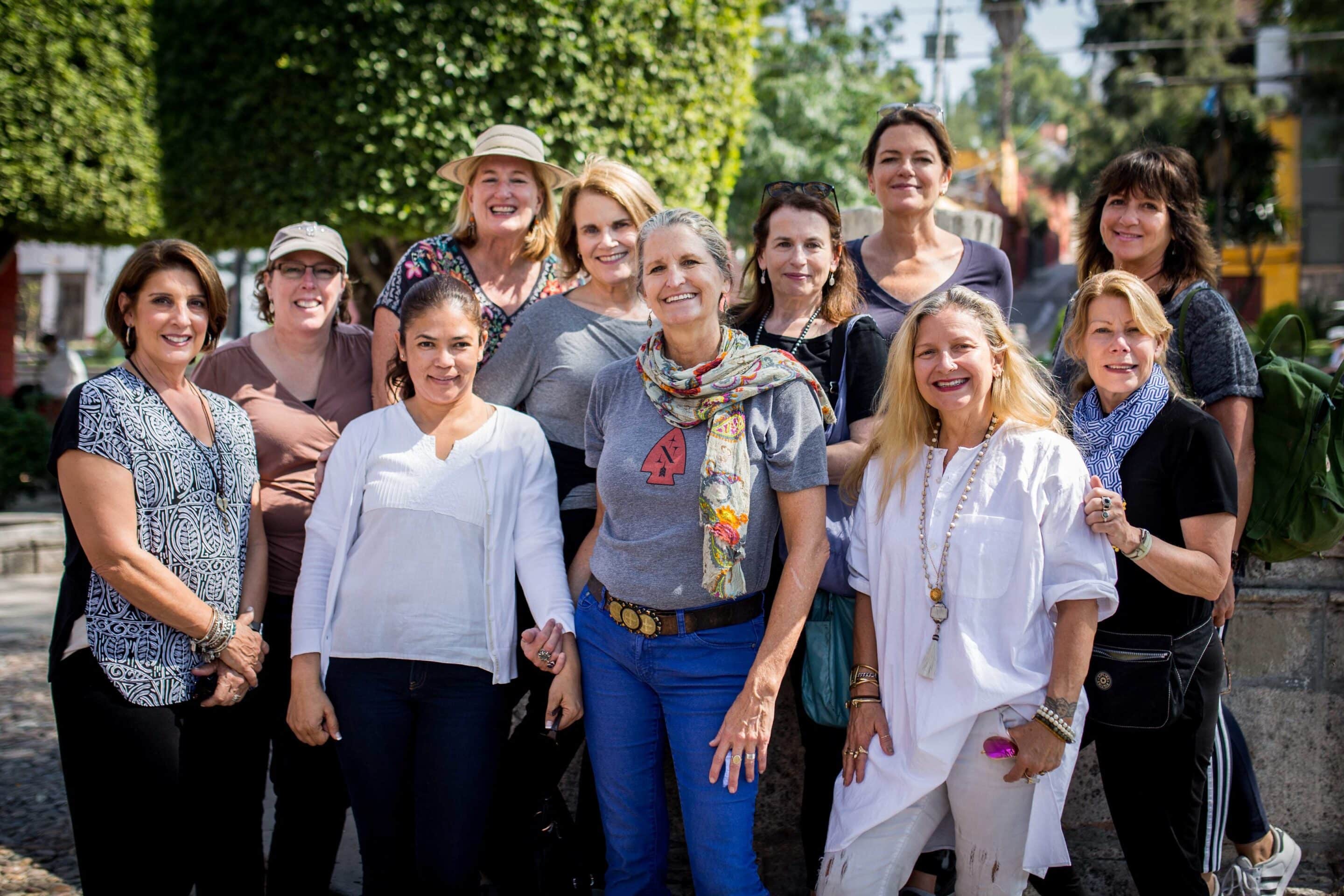

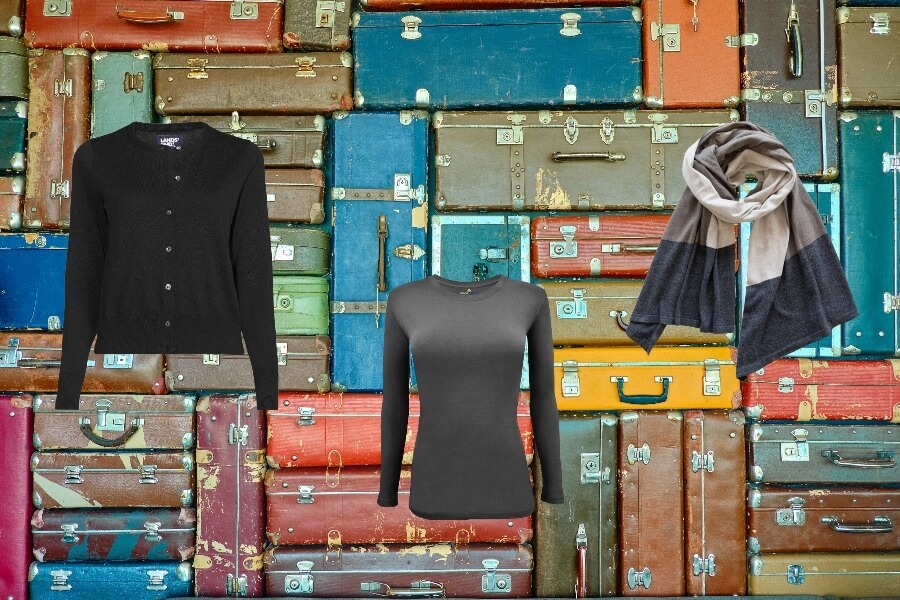


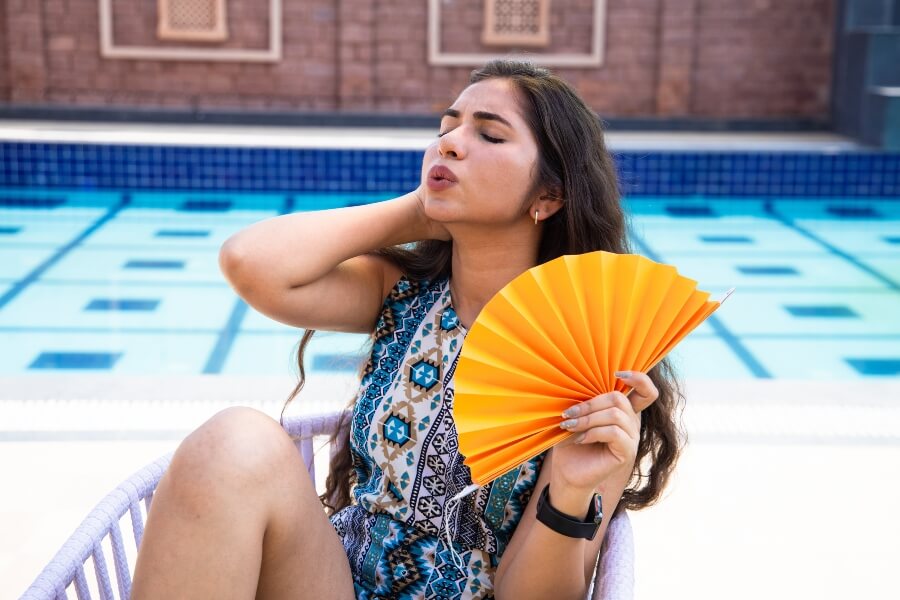









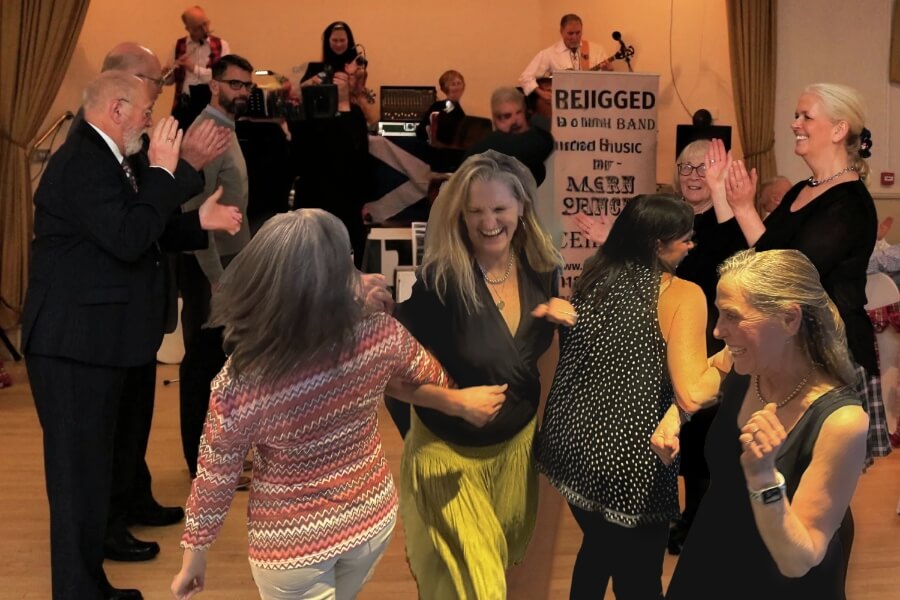


0 Comments